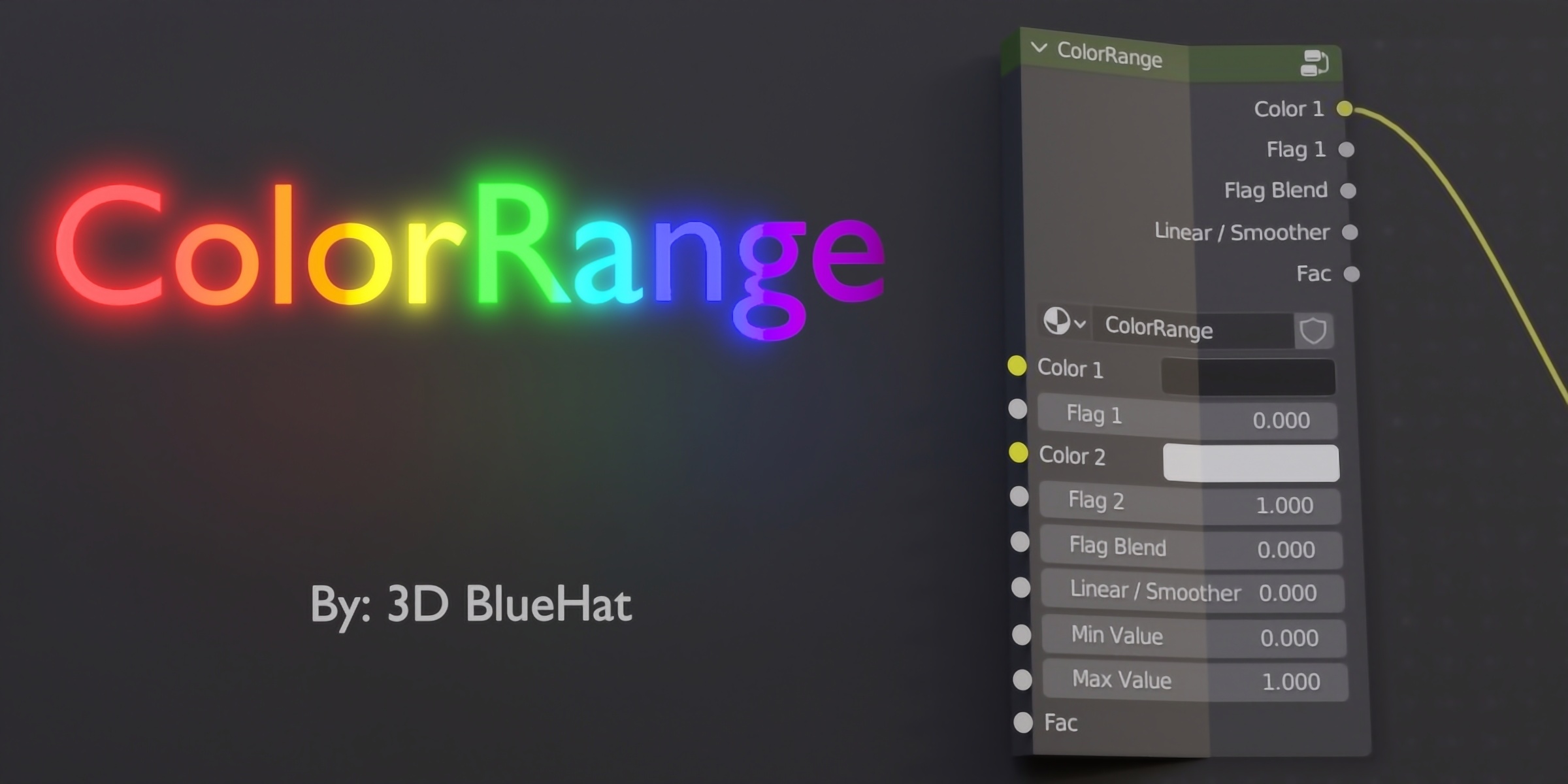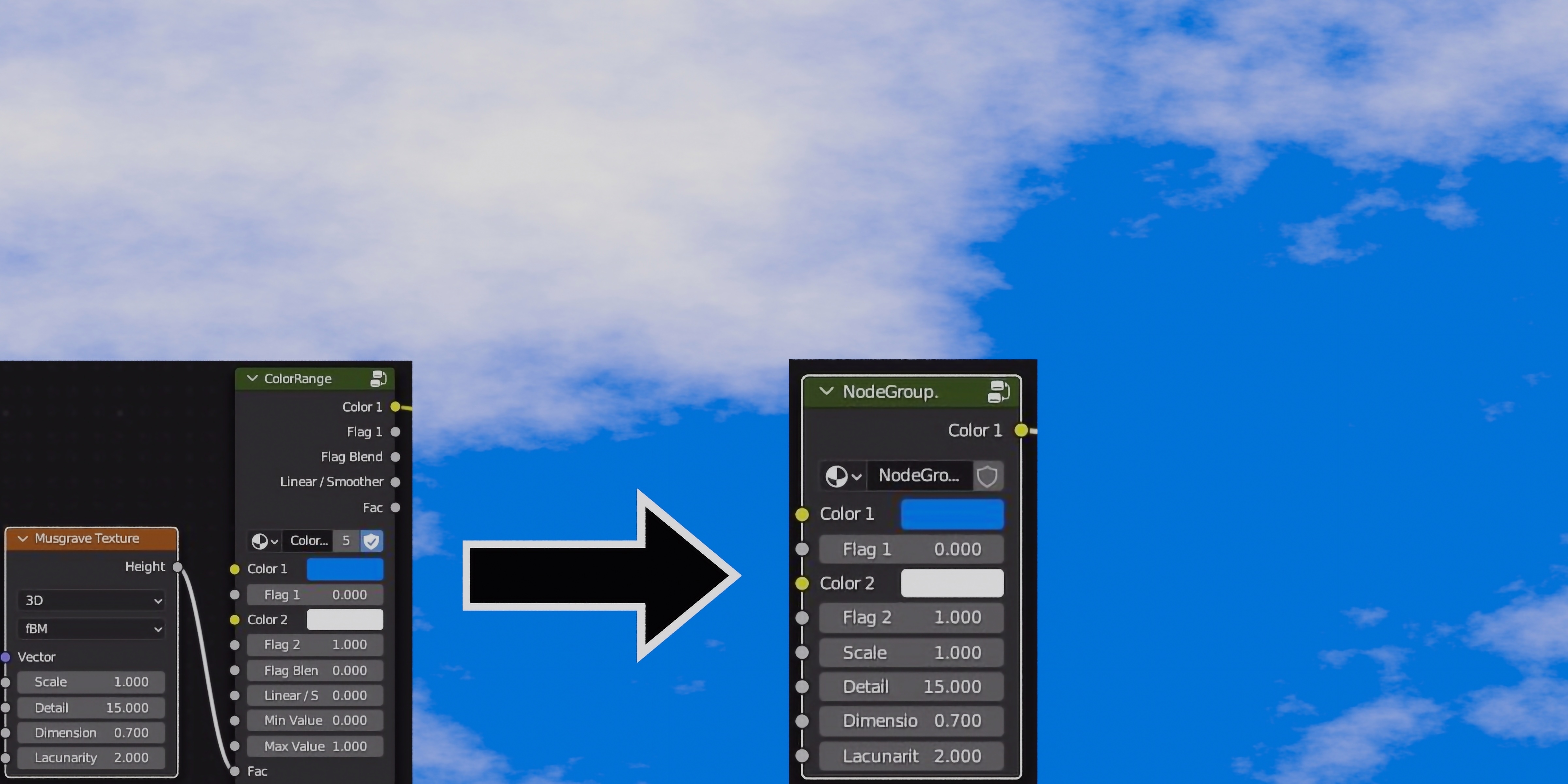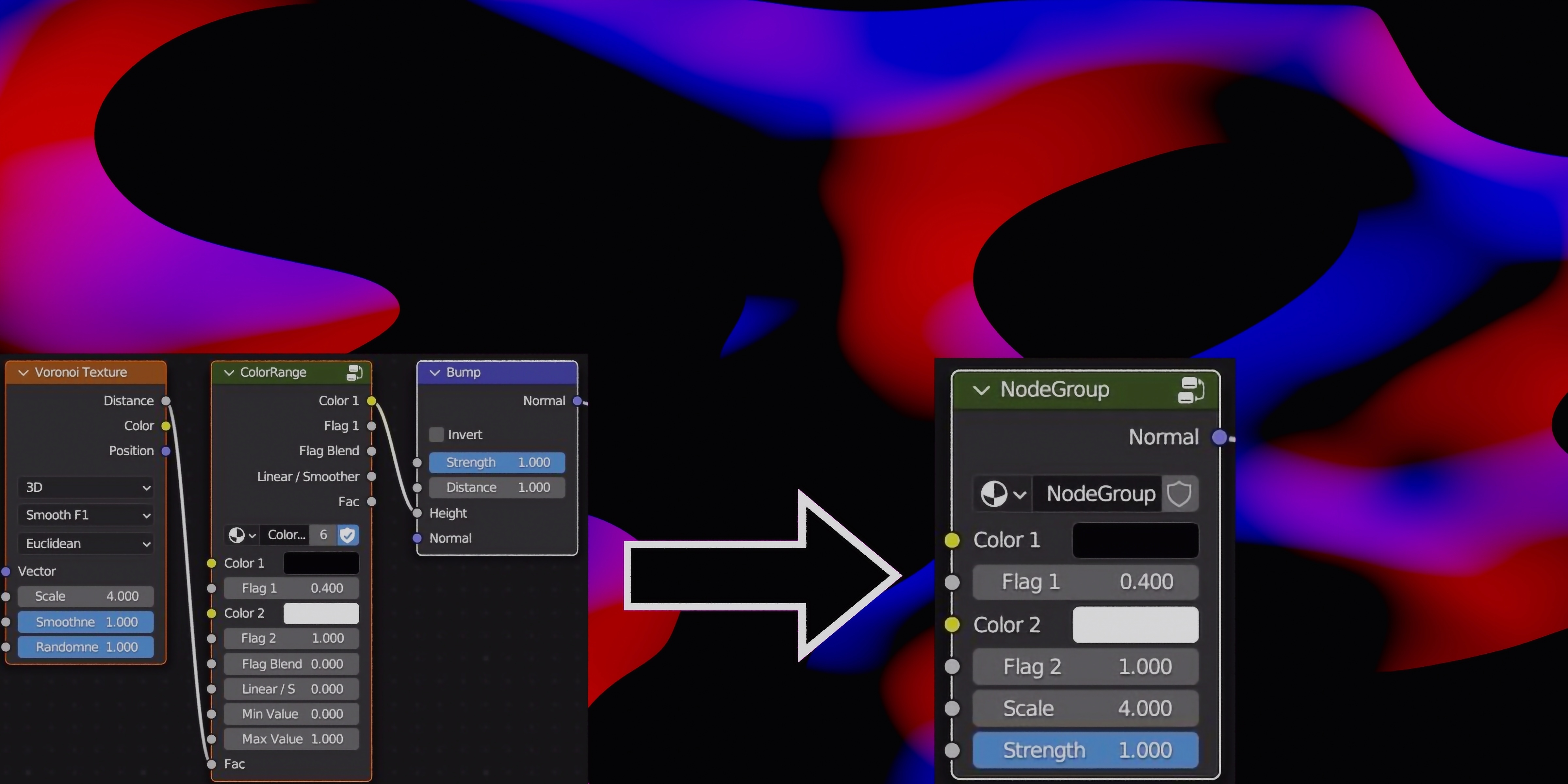Colorrange
ColorRange
(This Product is also included with PBR Advanced)
ColorRange is a modular node group that can be used in the place of a ColorRamp in order to have inputs for external control. Use it when making procedural textures, materials, or anything else in the shader editor.
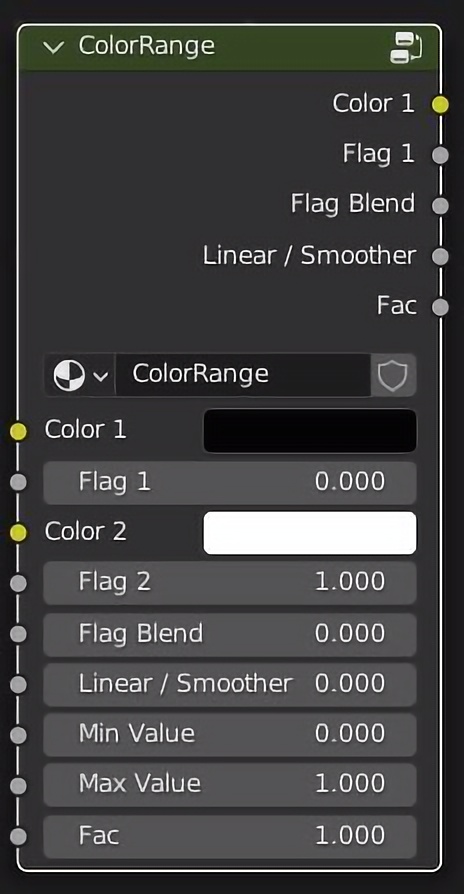
The ColorRange node group was built with a modular design for expandability. Simply connect all of the outputs from one ColorRange node group into the corresponding inputs of another. This is the same as adding an additional flag in a ColorRamp. (With the Node Wrangler addon enabled, this can be done faster.)
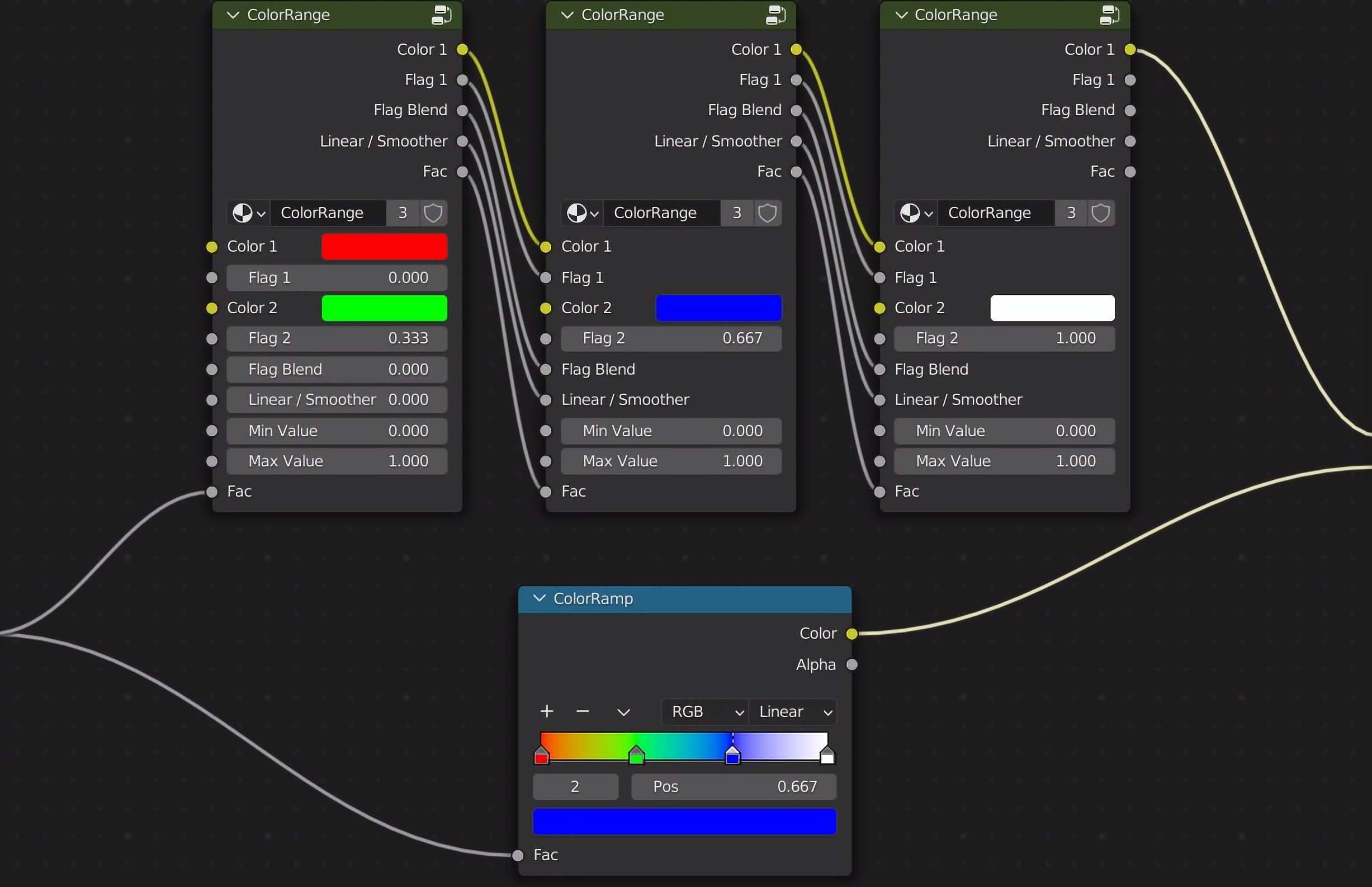
In the example above, the connected ColorRange node groups give the same result as the ColorRamp underneath.
So why use a ColorRange instead?
Although it may take a minute to use this modular set up, you will then have complete control over all of the "Color" values and "Flag" positions from the outside of any other node group.
When connecting more than one ColorRange, the “Color 2” and “Flag 2” of the additional ColorRange act as “Color 3” and “Flag 3”. And this continues in the same manner (4,5,etc.) with each additional ColorRange added. The "Color 1" output of the last ColorRange is used as the main output.
Below you can see the primary benefit of using a modular ColorRange node group setup over using a ColorRamp inside of another node group.
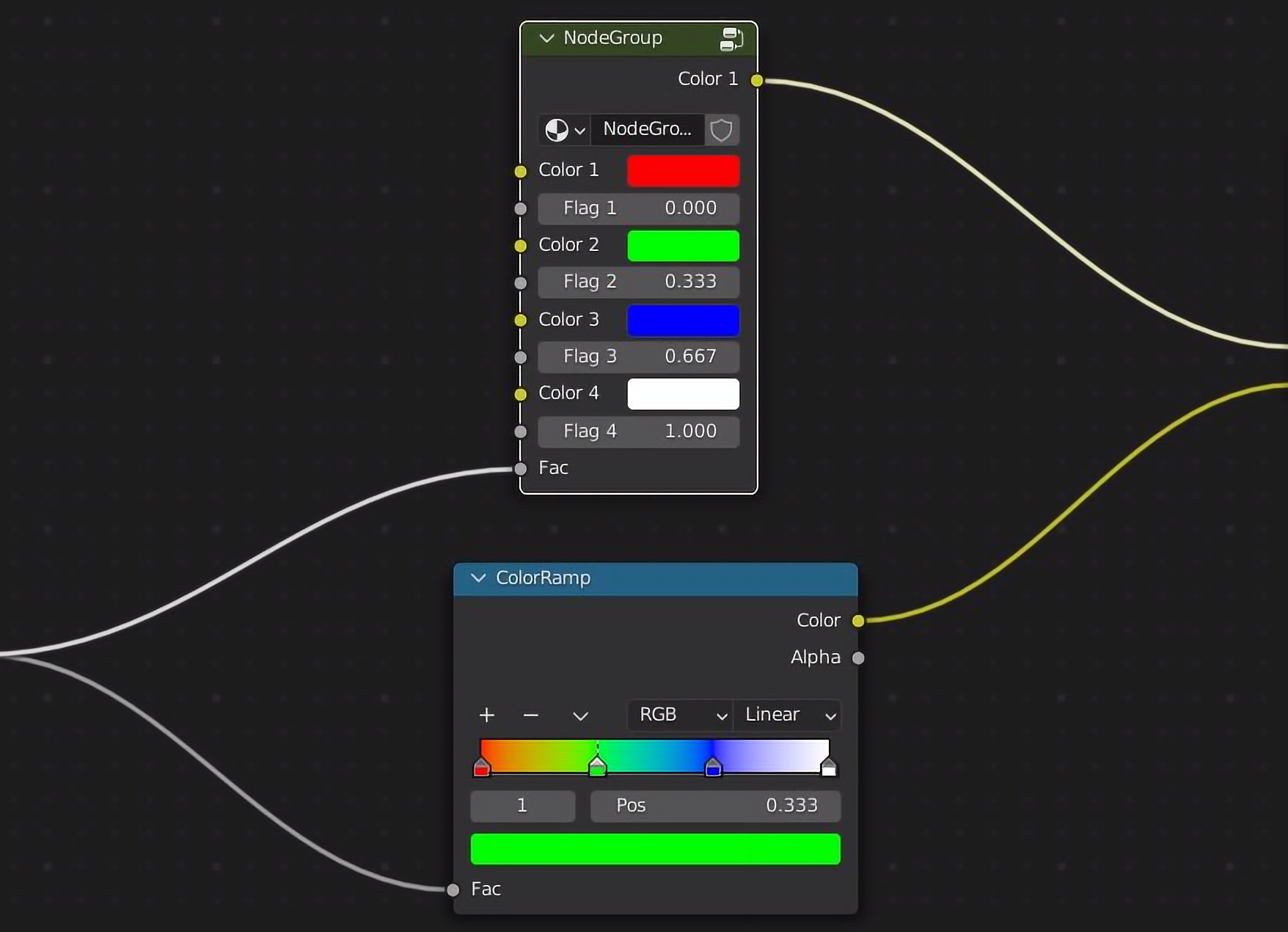
All of the values (in this case Colors and their associated Flags) are exposed and can be controlled as inputs from the outside of any node group, which is extremely useful and impossible when using a ColorRamp.
Add more external control to all of your procedural textures, materials and any other node groups that you create with the ColorRange node group by 3D BlueHat.
Discover more products like this
blender procedural procedural custom node blender-node colorramp Node
